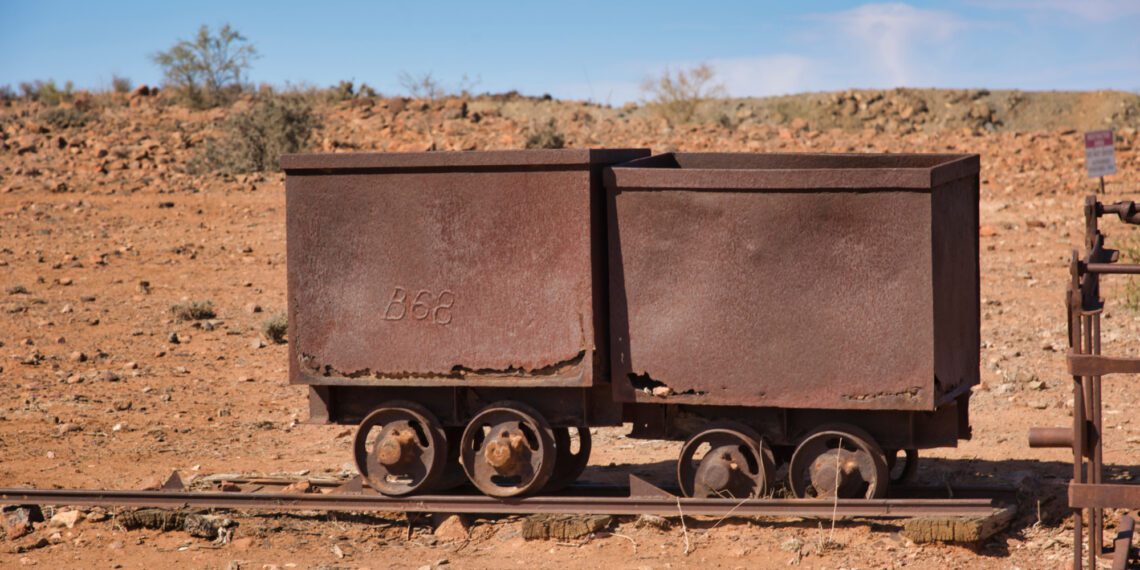Some people call them “second chancers”, others “zombie mines”. But these are the mothballed projects that are currently being raised from the dead due to vastly improved commodity prices, new technology, new drilling success, or new thinking – and there is a current invasion of them spreading across the globe.
Reborn gold mines are in particular abundance thanks largely to the record-breaking levels gold has reached in recent years compared with the payback the miners were receiving in the late 1980s to early 2000s, when many of these mothballed mines were considered uncommercial and put out to pasture.
In the booming mining jurisdictions of the U.S., Canada, and Australia in particular, old timers and newcomers are breathing life into once-famous mines and racing to bring them back to life while prices remain at the current levels.
In Australia, a number of abandoned mines are now on target to produce significant amounts of gold in the coming years.
Red 5: rising to the top at King Of The Hills
In the Goldfields of Western Australia, Red 5 Limited (ASX: RED) is making significant progress with the development of its 2.4Moz, 16-year Life-Of-Mine King of the Hills (KOTH) Gold Project, which is on target to commence production in the June quarter of 2022.
Previously known as the Tarmoola mine, the King of the Hills mine near Leonora was first mined as an open pit in 1985 and was mothballed in September 2004.
Since then, work at King Of The Hills remained at a virtual stand-still until Red 5 completed the project’s acquisition in October 2017 and since then the company has gradually ramped up the speed of development.
Red 5 reported in August that King Of The Hills had passed the 50% completion milestone, with Managing Director Mark Williams declaring that the project is beginning to take shape as Australia’s next major gold mine.
King Of The Hills has a Mineral Resource of 4.12Moz of contained gold and Ore Reserve of 2.4Moz, which remains open along strike and at depth.
Feasibility studies have identified an initial 16-year Life Of Mine, with a production average of 176,000 ounces per annum over the first six years.
Bellevue Gold: new life for world-class namesake mine
Elsewhere in Western Australia, one of the country’s richest-ever gold mines is set to be reborn. Originally mined in several spurts from 1896 to 1997, the Bellevue Gold Mine is acknowledged as one of the highest-grade gold producers in Australian mining history.
Mothballed due to low gold prices and a belief that its rich veins had been tapped out, the mine lay virtually forgotten until Bellevue Gold Limited (ASX: BGL) drilled the rich Tribune discovery hole in November 2017.
A string of drilling successes since then has seen this once “zombie” mine now rated among the world’s leading gold projects based on the key criteria of grade, production, location and free cashflow generation.
Bellevue’s managing director, Steve Parsons, stated recently that the mine is one of only seven other assets in the world which can boast a grade of more than 5 g/t and annual production of +180,000oz in a tier-one location.
A recently completed, updated Feasibility Study confirmed that the company’s highly successful exploration programme has resulted in the Indicated Resource growing from 1Moz in the Stage One Feasibility Study to 1.4Moz in the Stage Two Study. Reserves have increased from 690,000oz to 1.04Moz. This expanded inventory has enabled Bellevue to increase the planned throughput rate from 750,000 tonnes a year to 1.0 million tonnes. This resulted in forecast production in the first five years rising from an annual average of 160,000oz to 200,000oz.
Initial development activities are underway with Bellevue targeted to return to life in 2023. However, it is not only precious metal mines in Australia that are racing back into production.
Blackstone Minerals: Ta Khoa Nickel-Copper-PGE Project
In Vietnam, Blackstone Minerals (ASX: BSX) has been bolstered by ongoing drilling success, increasing demand for nickel as a battery metal and new development model in its plans to restart the Ta Khoa Nickel-Copper-PGE Project.
Located 160km west of Hanoi in the Son La province of Vietnam, the project includes an existing modern nickel mine built to Australian standards, which is currently under care and maintenance since the closing of the Ban Phuc nickel mine in 2016.
Since announcing an option to acquire an initial 90% interest in Ta Khoa in May 2019, Blackstone has undertaken a number of highly successful drilling campaigns which have made numerous massive nickel sulphide discoveries, while at the same time completing a range of strategic market and development studies.
A recent Downstream Pre-feasibility Study confirmed a technically and economically robust hydrometallurgical refining process to upgrade nickel sulphide concentrate to produce battery grade nickel: cobalt: manganese (NCM) 811 Precursor for the lithium-ion battery industry.
Blackstone’s PFS is based on the Ta Khoa refinery being designed to process 400ktpa of nickel concentrate, supplied from the Ta Khoa Nickel-Cu-PGE mine as well as third party concentrate.
Construction is scheduled to commence in 2023, with first production targeted for 2024.
The company has already held promising offtake discussions with a number of Asian lithium-ion battery manufacturers.
Global moves
With financial markets providing plenty of backing, mothballed mines are being reinvestigated across the globe, even in lesser-known mining jurisdictions.
London Stock Exchange, OTC, and ASX-listed Adriatic Metals Plc (LSE: ADT1 | OTCQX: ADMLF | ASX: ADT) recently completed a successful Definitive Feasibility Study (DFS) for the Vares Silver Project in Bosnia & Herzegovina.
The 2021 DFS mine plan is focused on mining the high-grade sections of the Rupice deposit as early as possible and delivering consistent high-grade feed to the Vares Processing Plant for as long as possible.
The Vares Silver Project hosts two Mineral Resources: the Rupice underground deposit and the Veovaca open pit deposit.
Veovaca was a previously operating open-pit mine producing lead, zinc, and barite concentrates, but it ceased operations in 1988. The potential economic viability of the Rupice deposit was only determined in 2017 after it was acquired by Adriatic Metals earlier the same year.
Elsewhere around the world, old tin mines, iron ore projects, coal developments, tungsten mines, and nickel mines – and of course gold mines – are all being given a new lease of life in destinations from the UK to Lapland to Papua New Guinea as a host of “zombie” mines are raised from the dead.












